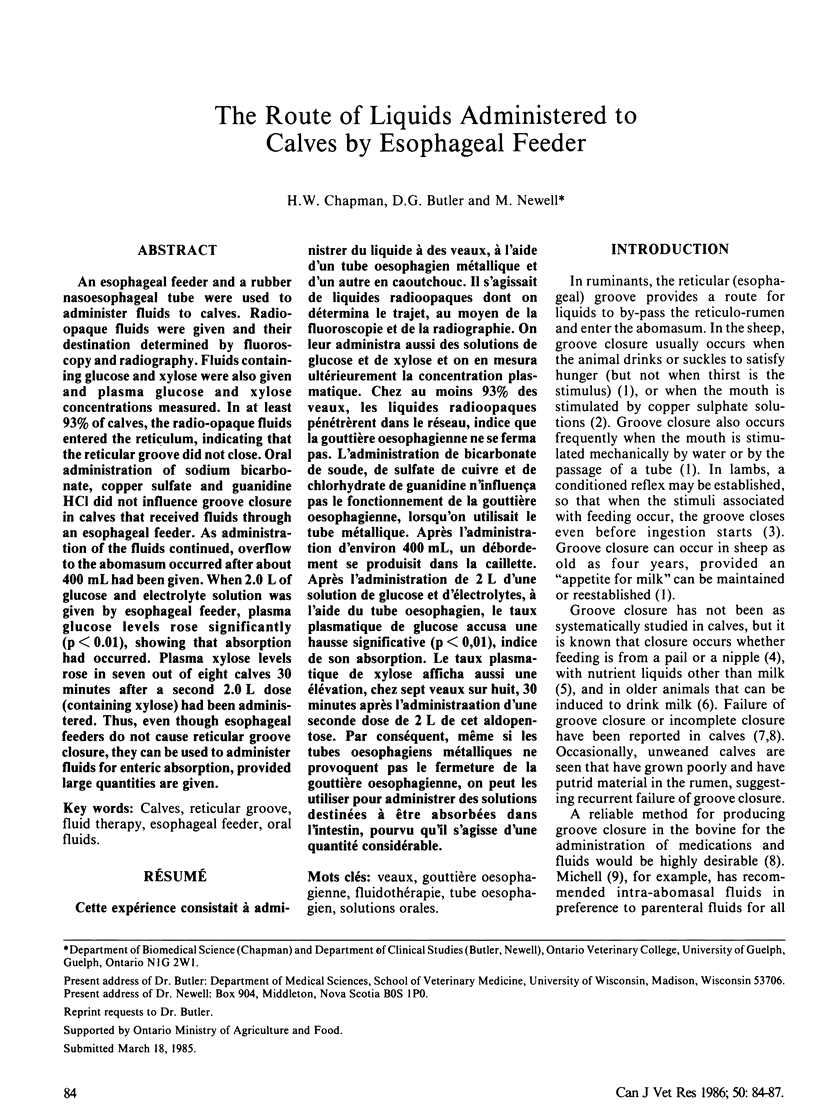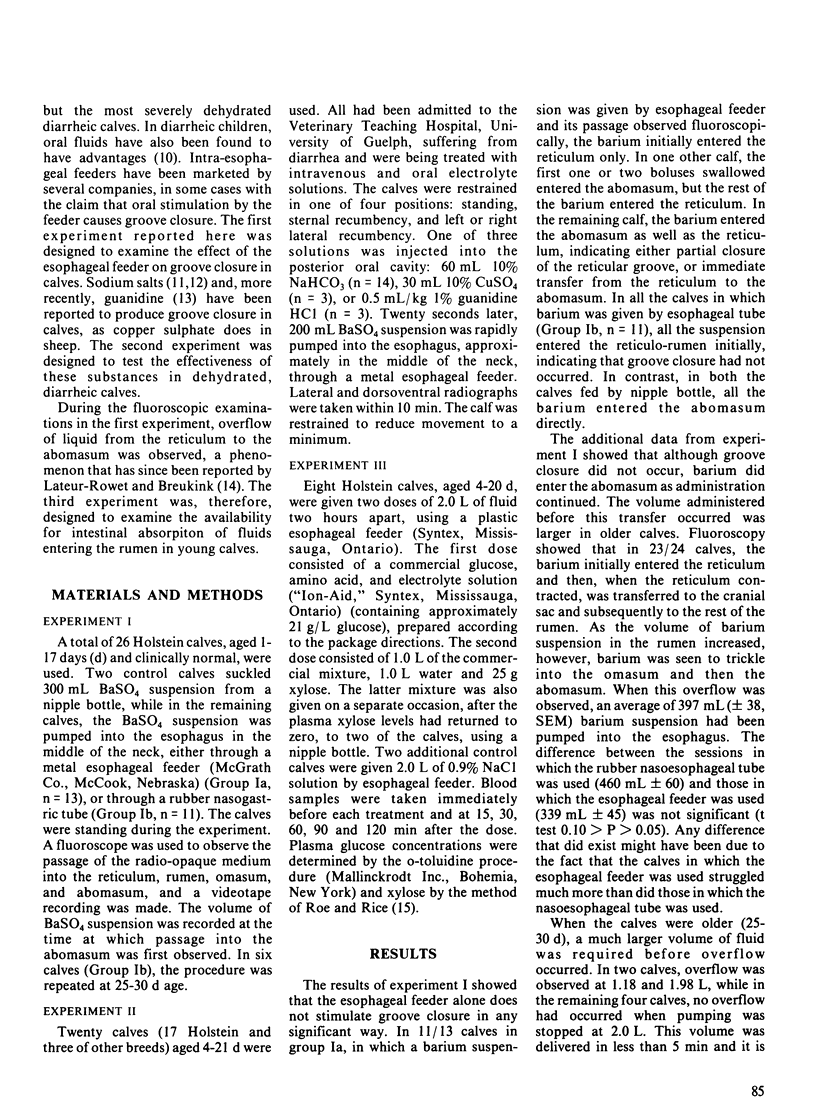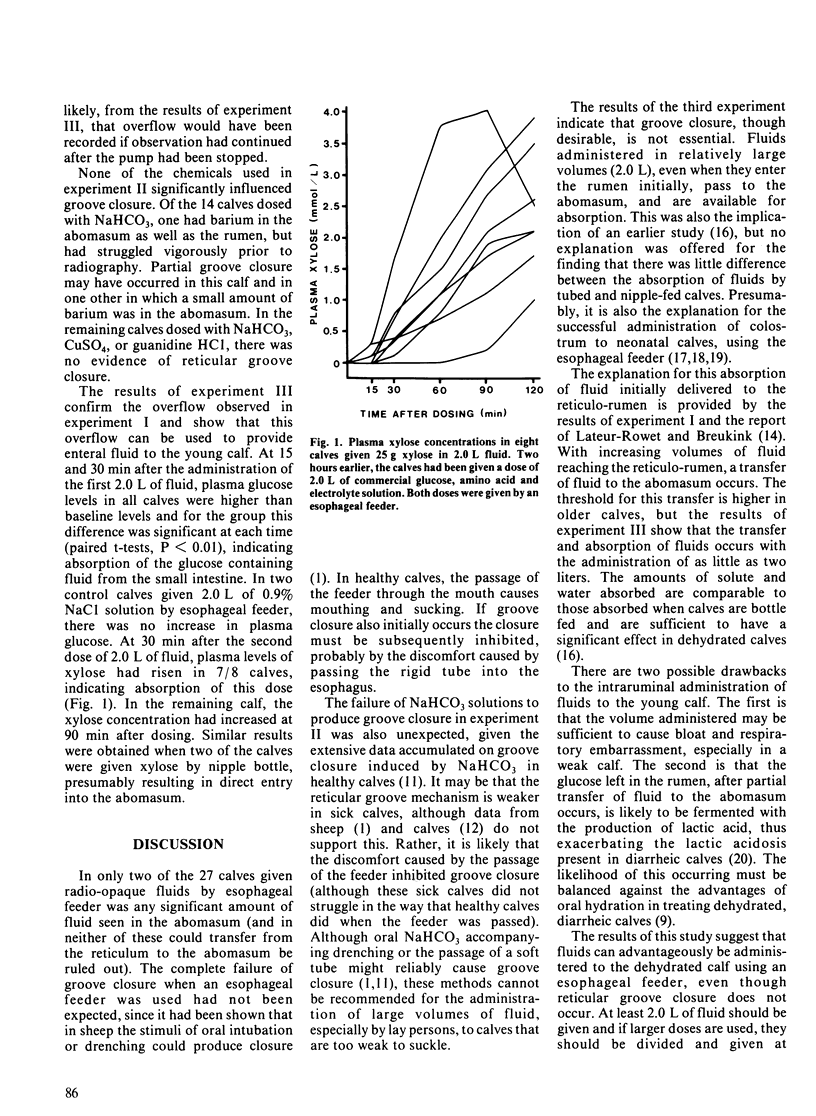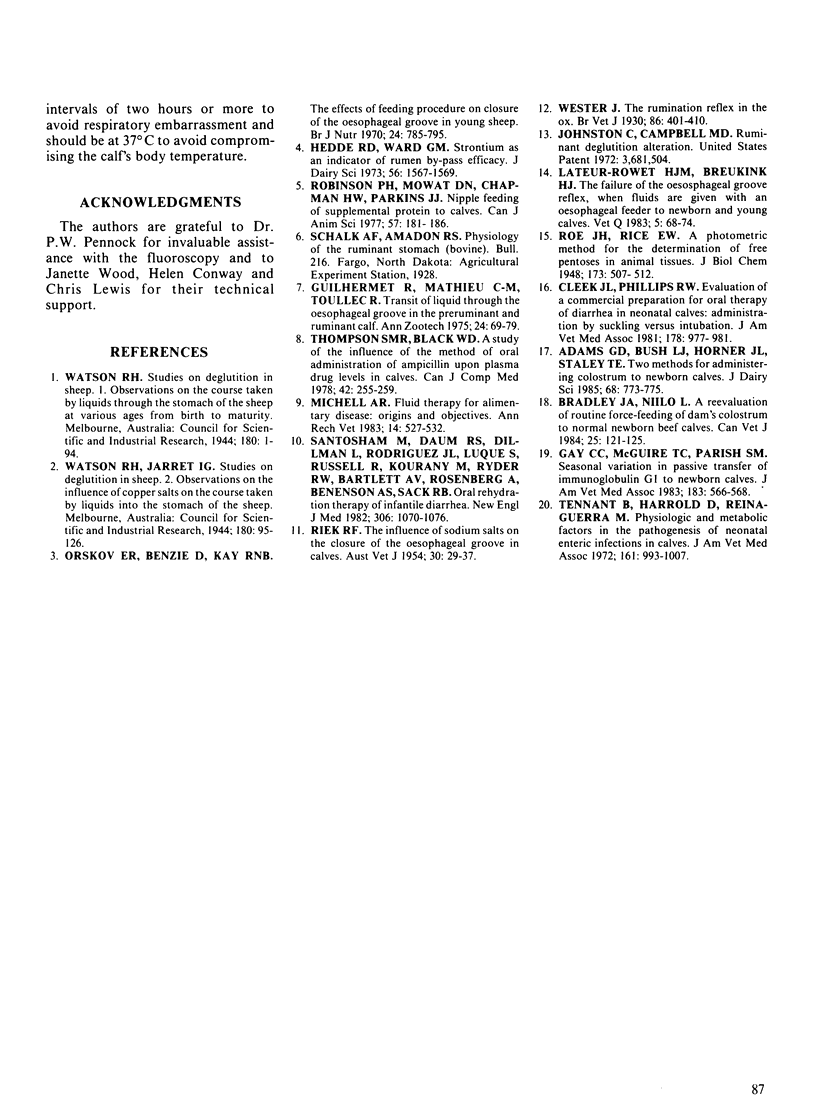Abstract
An esophageal feeder and a rubber nasoesophageal tube were used to administer fluids to calves. Radio-opaque fluids were given and their destination determined by fluoroscopy and radiography. Fluids containing glucose and xylose were also given and plasma glucose and xylose concentrations measured. In at least 93% of calves, the radio-opaque fluids entered the reticulum, indicating that the reticular groove did not close. Oral administration of sodium bicarbonate, copper sulfate and guanidine HCl did not influence groove closure in calves that received fluids through an esophageal feeder. As administration of the fluids continued, overflow to the abomasum occurred after about 400 mL had been given. When 2.0 L of glucose and electrolyte solution was given by esophageal feeder, plasma glucose levels rose significantly (p less than 0.01), showing that absorption had occurred. Plasma xylose levels rose in seven out of eight calves 30 minutes after a second 2.0 L dose (containing xylose) had been administered. Thus, even though esophageal feeders do not cause reticular groove closure, they can be used to administer fluids for enteric absorption, provided large quantities are given.
Full text
PDF



Selected References
These references are in PubMed. This may not be the complete list of references from this article.
- Adams G. D., Bush L. J., Horner J. L., Staley T. E. Two methods for administering colostrum to newborn calves. J Dairy Sci. 1985 Mar;68(3):773–775. doi: 10.3168/jds.S0022-0302(85)80887-0. [DOI] [PubMed] [Google Scholar]
- Bradley J. A., Niilo L. A Reevaluation of Routine Force-feeding of Dam's Colostrum to Normal Newborn Beef Calves. Can Vet J. 1984 Mar;25(3):121–125. [PMC free article] [PubMed] [Google Scholar]
- Cleek J. L., Phillips R. W. Evaluation of a commercial preparation for oral therapy of diarrhea in neonatal calves: administration by suckling versus intubation. J Am Vet Med Assoc. 1981 May 1;178(9):977–981. [PubMed] [Google Scholar]
- Gay C. C., McGuire T. C., Parish S. M. Seasonal variation in passive transfer of immunoglobulin G1 to newborn calves. J Am Vet Med Assoc. 1983 Sep 1;183(5):566–568. [PubMed] [Google Scholar]
- Hedde R. D., Ward G. M. Strontium as an indicator of rumen by-pass efficacy. J Dairy Sci. 1973 Dec;56(12):1567–1569. doi: 10.3168/jds.S0022-0302(73)85409-8. [DOI] [PubMed] [Google Scholar]
- Lateur-Rowet H. J., Breukink H. J. The failure of the oesophageal groove reflex, when fluids are given with an oesophageal feeder to newborn and young calves. Vet Q. 1983;5(2):68–74. doi: 10.1080/01652176.1983.9693874. [DOI] [PubMed] [Google Scholar]
- Michell A. R. Fluid therapy for alimentary disease: origins and objectives. Ann Rech Vet. 1983;14(4):527–532. [PubMed] [Google Scholar]
- Orskov E. R., Benzie D., Kay R. N. The effects of feeding procedure on closure of the oesophageal groove in young sheep. Br J Nutr. 1970 Sep;24(3):785–795. doi: 10.1079/bjn19700080. [DOI] [PubMed] [Google Scholar]
- Santosham M., Daum R. S., Dillman L., Rodriguez J. L., Luque S., Russell R., Kourany M., Ryder R. W., Bartlett A. V., Rosenberg A. Oral rehydration therapy of infantile diarrhea: a controlled study of well-nourished children hospitalized in the United States and Panama. N Engl J Med. 1982 May 6;306(18):1070–1076. doi: 10.1056/NEJM198205063061802. [DOI] [PubMed] [Google Scholar]
- Tennant B., Harrold D., Reina-Guerra M. Physiologic and metabolic factors in the pathogenesis of neonatal enteric infections in calves. J Am Vet Med Assoc. 1972 Nov 1;161(9):993–1007. [PubMed] [Google Scholar]
- Thompson S. M., Black W. D. A study of the influence of the method of oral administration of ampicillin upon plasma drug levels in calves. Can J Comp Med. 1978 Jul;42(3):255–259. [PMC free article] [PubMed] [Google Scholar]


